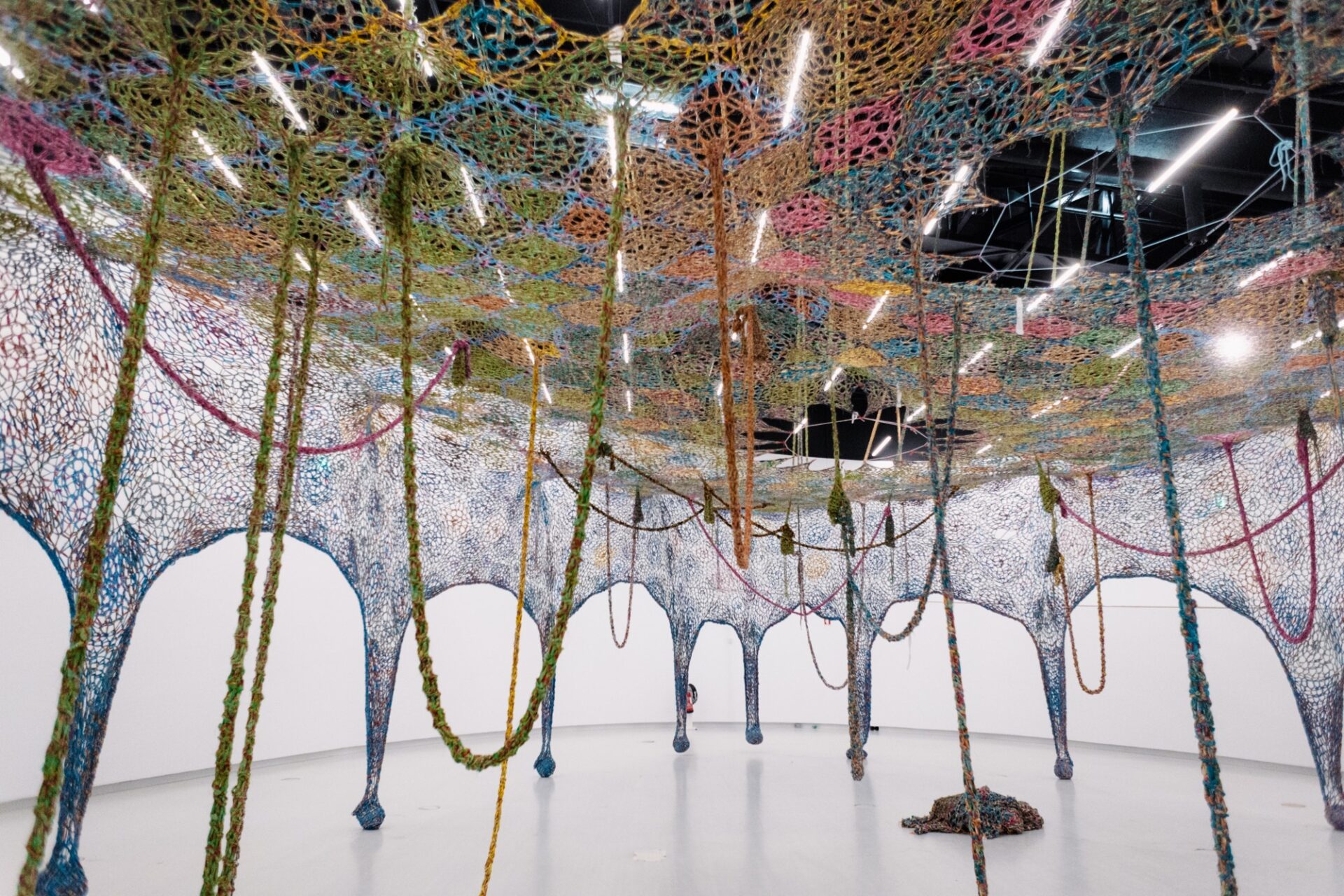
[ad_1]
Art
History
#Brazil
#crochet
#Ernesto Neto
#installation
#Portugal
#textiles
April 23, 2024
Kate Mothes

Photo by Joana Linda. All images © Ernesto Neto, courtesy of MAAT, shared with permission
An enormous, cascading installation of crocheted fabric strips stretches across a cavernous gallery in Ernesto Neto’s newest exhibition. At MAAT in Lisbon, the Brazilian artist (previously) presents Nosso Barco Tambor Terra, which translates to “our boat drum Earth,” a solo exhibition encompassing one of the largest suspended sculptures he has ever made.
Created with a team of assistants in his expansive Rio de Janeiro studio, the new piece draws on images of sails and maritime materials like canvas and rope. Neto nods to the history of transatlantic voyages between Europe and South America, stitching remnants of bright chintz, common in Brazil, into a swathe of fabric punctuated by points of interest like a vessel full of decorated drums or corn kernels, a symbol of international trade. Historically, the percussive instrument kept a rhythm for the galley rowers, some of whom would have been enslaved people.

Photo by Joana Linda
Suspended from the ceiling, the central work in Nosso Barco Tambor Terra adopts a cell-like structure, with numerous colors and patterns that intertwine, drape, stretch, and overlap. The piece suggests “a ship, a primordial beast, a forest, or even, and more likely, all of those things and infinite others,” writes curator Jacopo Crivelli Visconti in the exhibition text. He emphasizes that Neto portrays the world as a whole, defining the earth as “ancestral, pre-colonial, and even pre-human.”
The artist considers the dark legacies of enforced displacement and slavery during colonial rule, which the Portuguese implemented in Brazil. He situates the work as celebration of the planet’s array of people, cultures, and “worldviews whose strength and beauty one must recognise, reaffirm,” Visconti says. Amid destruction and chaos, Neto’s ark-like vessel envisions a way to propel the whole world forward.
The exhibition opens May 2 and continues through October 7 in Lisbon. Find more from MAAT.

Photo by Joana Linda

Photo by Joana Linda

Photos by Joana Linda

Photo by Joana Linda

Photo by Paulo Schettino

Photos by Joana Linda

Photo by Paulo Schettino
#Brazil
#crochet
#Ernesto Neto
#installation
#Portugal
#textiles
Do stories and artists like this matter to you? Become a Colossal Member today and support independent arts publishing for as little as $5 per month. You’ll connect with a community of like-minded readers who are passionate about contemporary art, read articles and newsletters ad-free, sustain our interview series, get discounts and early access to our limited-edition print releases, and much more. Join now!
[ad_2]